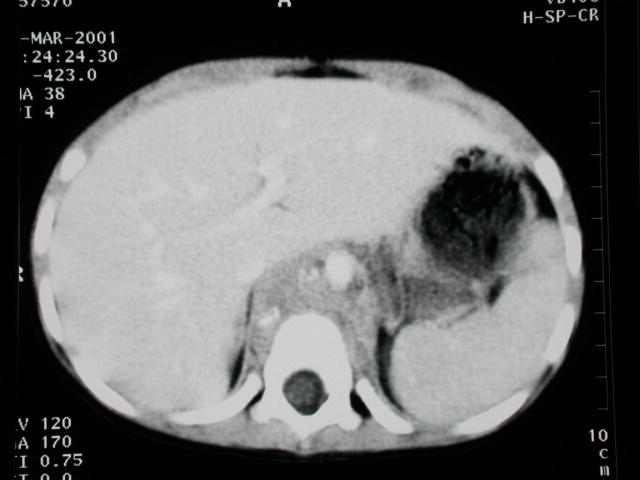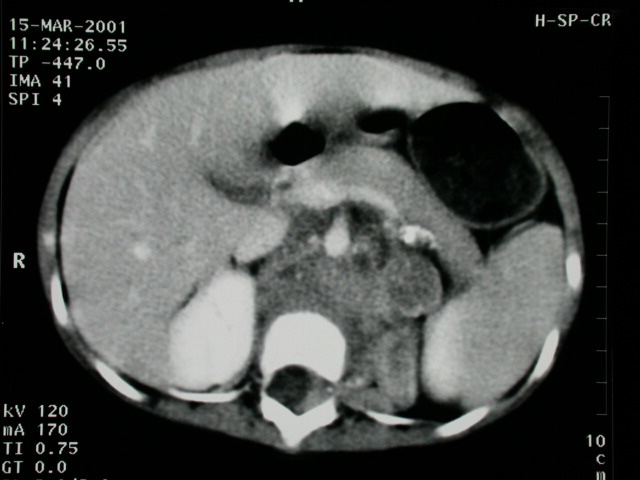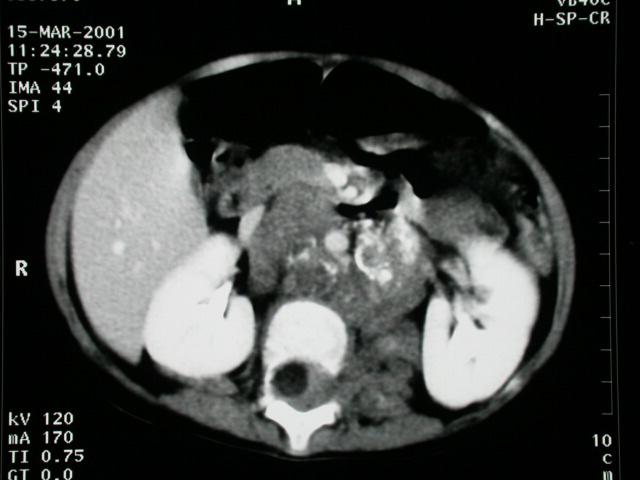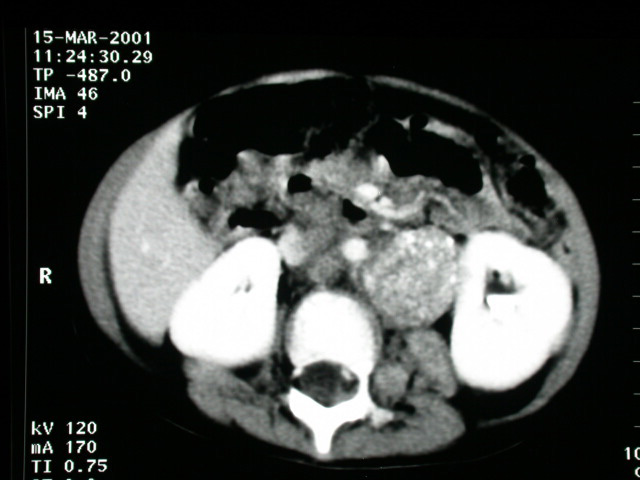History :
This 3Y 5M/O female was relative well before until 2+ month ago. Refuse
walking was noted and leg pain (migrating from L't to R't knee)
Image finding :
Pre-and postcontrast abdominal and pelvic CT showed
-there is a large well defined heterogeneous tumor with cacification
in the L't paraspinal region at the leevel of
-L't adrenal gland and L't kidney.
-Soft tissue density lesion are also noted in the retrocrural space
and para-aortic region and the aorta and IVC are displaced anteriorly.
-There is no focal lesion in the liver,spleen, pancreas and both kidneys.
Diagnosis :
Neuroblastoma, stage IV
Discussion :
NEUROBLASTOMA
Age:
peak age at 2 years;
25% during 1st year;
50% <2 years;
75% in <4 years;
90% in <8 years; occasionally present at birth; M:F = 1:1
-- pain + fever
-- palpable abdominal mass
-- bone pain, limp, inability to walk
-- myoclonus of trunk + extremities
-- cerebellar ataxia, nystagmus (20%)
-- opsoclonus = spontaneous conjugate + chaotic eye movements (sign
of cerebellar disease)
-- orbital ecchymosis / proptosis (12%)
-- intractable diarrhea (9%) due to increase in vasoactive intestinal
polypeptides (VIP)
-- increased catecholamine production (75-90%): in 95% excreted
in urine as vanillylmandelic acid (VMA) / homovanillic acid (HVA)
hypertension (up to 30%)
acute cerebellar encephalopathy
paroxysmal episodes of flushing, tachycardia, headaches, rise in
body
Location:
anywhere within sympathetic neural chain
Abdomen
-(a) adrenal (36%): almost always unilateral
-(b) both adrenals (7-10%)
-(c) extraadrenal in sympathetic chain (18%)
-thorax + posterior mediastinum (14%): aortic bodies
-neck (5%): carotid ganglia
-pelvis (5%): organ of Zuckerkandl
-skull / esthesioneuroblastoma of olfactory bulb, cerebellum, cerebrum
(2%)
-other sites (10%): eg, intrarenal (very rare) @unknown (10%)
--large suprarenal mass with irregular shape + margins
--texture with low-density areas from hemorrhage + necrosis (55%)
--stippled / coarse calcifications (36-70%)
--"drooping lily" sign = displacement of kidney inferolaterally
without distortion of collecting
--hydronephrosis (24%)
--inseparable from kidney ± invasion of kidney (32%)
--propensity for extension into spinal canal through neural foramen
with erosion of pedicles (15%)
--extension across midline (55%) (DDx: Wilms tumor)
--retroperitoneal adenopathy / contiguous extension (73%)
-- retrocrural adenopathy (27%)
--encasement of IVC + aorta, celiac axis, SMA (32%)
--caval involvement = indicator of unresectability
--liver metastases (18-66%); invasion of liver (5%) |





